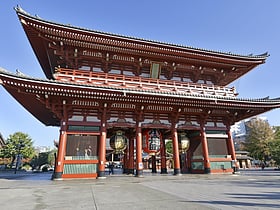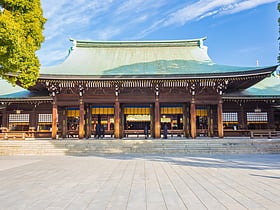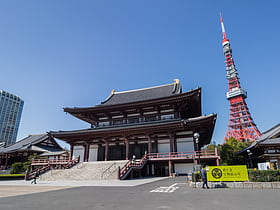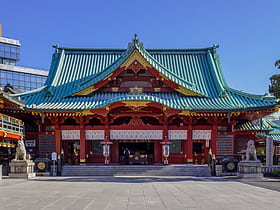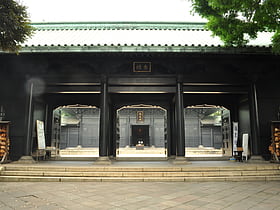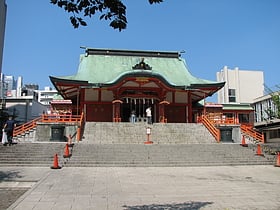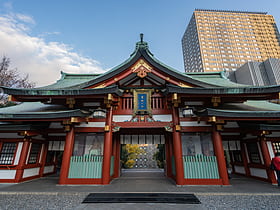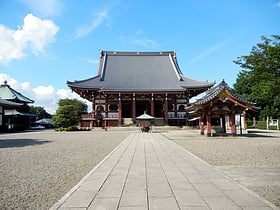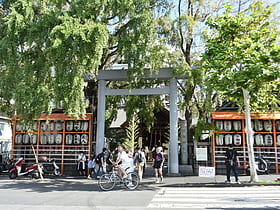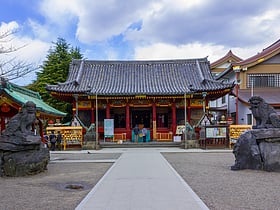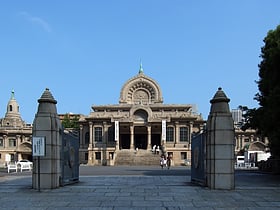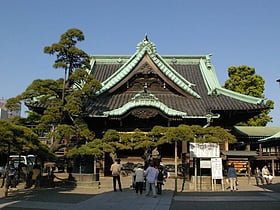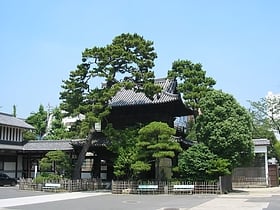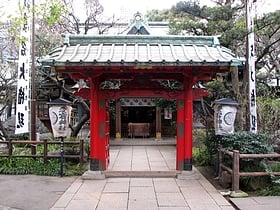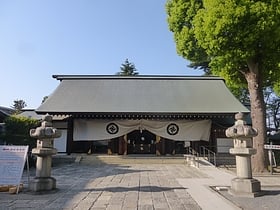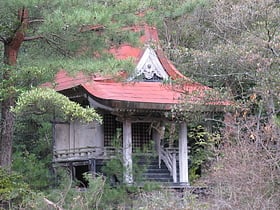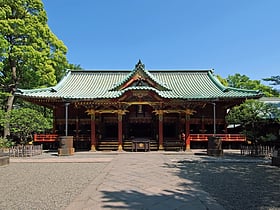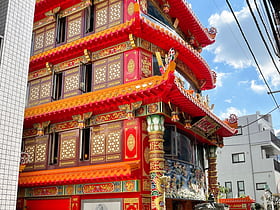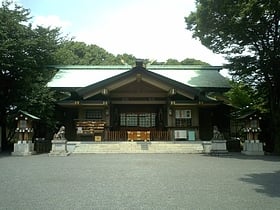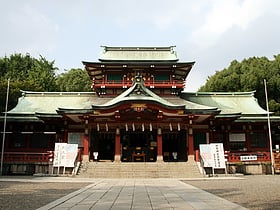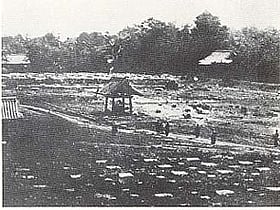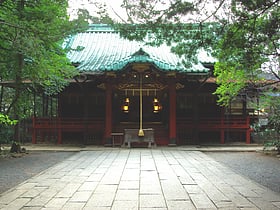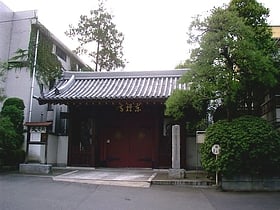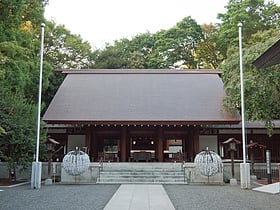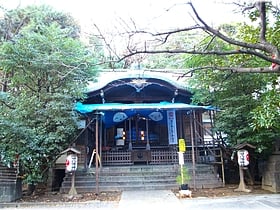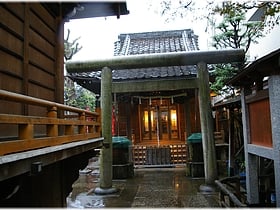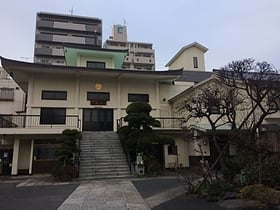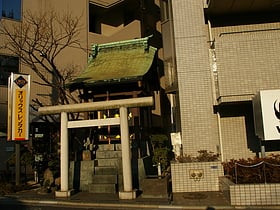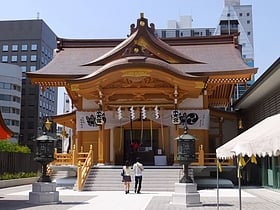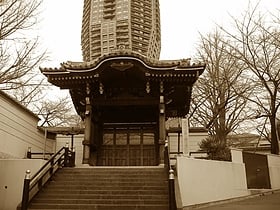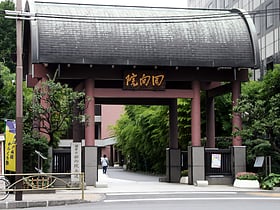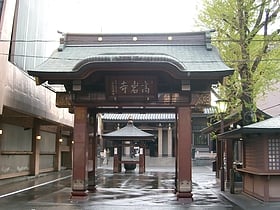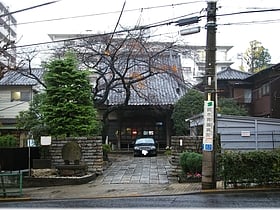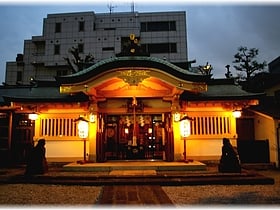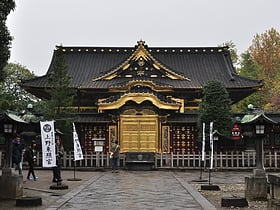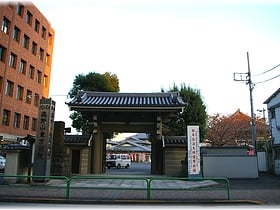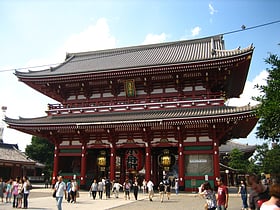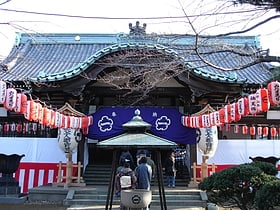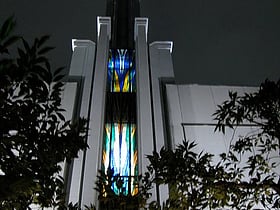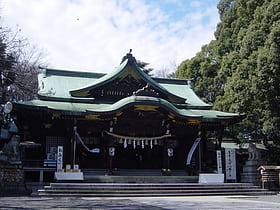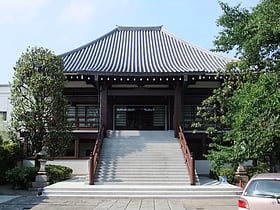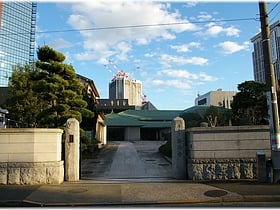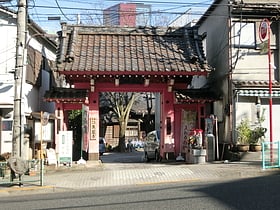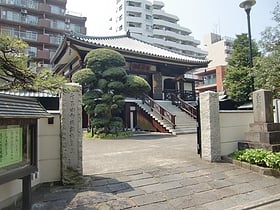Tokyo: Temple
Places and attractions in the Temple category
Categories
- Museum
- Park
- Temple
- Art museum
- Sacred and religious sites
- Neighbourhood
- Shopping
- Amusement park
- Theater
- Skyscraper
- Concerts and shows
- Universities and schools
- Buddhist architecture
- Specialty museum
- Nightlife
- Area
- Architecture
- Historical place
- Shopping centre
- History museum
- Garden
- Amusement
- Concert hall
- Sport
- Music venue
- Sport venue
- Theme park
- Music and shows
- Amusement ride
- Buddhist temple
- Arenas and stadiums
- Bridge
- Library
- Art gallery
- Modern art museum
- Event space
- Palace
- Dancing
- Tower
- Science museum
- Observation decks and towers
- Church
- Forts and castles
- Business center
- Botanical garden
- Convention center
- Entertainment district
- Sport complex
- City
- Cemetery
- Monuments and statues
Sensō-ji
Historic temple to the goddess of mercy Sensō-ji, an ancient Buddhist temple located in the historic Asakusa district of Tokyo, Japan, is the city's oldest and one of its most significant religious sites. The temple, associated with the Bodhisattva Kannon, or Avalokitesvara, attracts millions of visitors...
Meiji Shrine
Famed Shinto shrine with a garden Nestled in the bustling heart of Tokyo, the Meiji Shrine (Meiji Jingu) stands as a serene testament to Japan's rich history and cultural heritage. Dedicated to the deified spirits of Emperor Meiji and his consort, Empress Shoken, this Shinto shrine is a tranquil oasis...
Zōjō-ji
Buddhist temple complex dating to 1622 Zōjō-ji is an iconic Buddhist temple located in the Minato district of Tokyo, Japan, offering a serene escape amidst the bustling cityscape. Founded in 1393 as the main temple of the Jodo sect of Japanese Buddhism, it has stood as a spiritual center for centuries...
Kanda Shrine
Enduring shrine with red and gold decor Nestled in the bustling district of Chiyoda in Tokyo, Japan, the Kanda Shrine stands as a serene oasis amidst the urban sprawl. Known in Japanese as Kanda Myojin, this Shinto shrine has been a spiritual cornerstone for the local community and visitors for centuries...
Yushima Seido
Yushima Seidō, is a Confucian temple in Yushima, Bunkyō, Tokyo, Japan. It was established in end of the 17th century during the Genroku era of the Edo period. Towards the late Edo period, one of the most important educational institutions of the shogunate, the Shōhei-zaka Gakumonjo, or Shōheikō, was founded on its grounds.
Hanazono Shrine
The Hanazono Shrine is a Shinto shrine located in Shinjuku, Tokyo, Japan. This shrine was founded in the mid-17th century. Hanazono Jinja nestled in the heart of Tokyo's Shinjuku ward, Hanazono Jinja is a small and unobtrusive structure that, according to Fodor's, just happens to be one of the most historical shrines in Japan.
Hie Shrine
The Hie Shrine is a Shinto shrine in Nagatachō, Chiyoda, Tokyo, Japan. Its June 15 Sannō Matsuri is one of the three great Japanese festivals of Edo.
Ikegami Honmon-ji
Ikegami Honmon-ji is a temple of the Nichiren Shū south of Tokyo, erected where Nichiren is said to have died. Also Nichiren's disciple Nikkō spent the rest of his life at this temple. The temple grounds also include Nichiren Shū's administrative headquarters.
Gokoku-ji
Gokoku-ji is a Shingon Buddhist temple in Tokyo's Bunkyō.
Namiyoke Inari Shrine
Namiyoke Inari Shrine is a Shinto shrine located in Tsukiji, Chūō, Tokyo. It is an Inari shrine that was built on the water's edge when this part of Tokyo was created from landfill after the Great Fire of Meireki in 1657.
Asakusa Shrine
Asakusa Shrine is a Shinto shrine located in the Asakusa district of Tokyo, Japan. Also known as Sanja-sama, it is one of the most famous Shinto shrines in the city. The shrine honors the three men who founded the Sensō-ji. Asakusa Shrine is part of a larger grouping of sacred buildings in the area.
Tsukiji Hongwanji
Tsukiji Hongan-ji, sometimes archaically romanized Hongwan-ji, is a Jodo Shinshu Buddhist temple located in the Tsukiji district of Tokyo, Japan. The temple is adjacent to Tsukiji Station on the Tokyo Metro Hibiya Line.
Shibamata Taishakuten
Daikyō-ji, popularly known as Shibamata Taishakuten, is a Nichiren-shū Buddhist temple in Katsushika, Tokyo, Japan. Founded in 1629, the main image is of Taishakuten.
Sengaku-ji
Sengaku-ji is a Buddhist temple belonging to the Sōtō school of Japanese Zen located in the Takanawa neighborhood of Minato-ku, near Sengakuji Station and Shinagawa Station, Tokyo, Japan.
Atago Shrine
The Atago Shrine in Minato, Tokyo, Japan is a Shinto shrine established in 1603 on the order of shōgun Tokugawa Ieyasu. The current shrine buildings on the site date from 1958. The shrine is located on Atagoyama, a hill rising 26 meters above sea level. In old times, the shrine had an excellent view of Tokyo, now obscured by high rises.
Shōin shrine
Shōin Shrine, located in Setagaya, Tokyo, is the Shinto shrine that is dedicated to the deified spirit of Yoshida Shōin, an activist during the Edo era.
Benten-dō
In Japanese a Benten-dō is a Buddhist temple dedicated to Benten or Benzaiten, goddess of wealth, happiness, wisdom and music. Many such temples exist all over Japan.
Nezu Shrine
Shrine with torii-lined pathways Nezu Shrine is a Shinto shrine located in the Bunkyō ward of Tokyo, Japan. Established in 1705, it is one of the oldest places of worship in the city, and several of the buildings on the shrine grounds have been designated as Important Cultural Property.
Tokyo Mazu Temple
The Tokyo Mazu Temple is a Chinese temple dedicated to the sea goddess Mazu, located in Shinjuku, Tokyo, Japan. It opened in October 2013.
Togo Shrine
The Tōgō Shrine was established in 1940 and dedicated to Gensui The Marquis Tōgō Heihachirō shortly after his death. This shrine was destroyed by the Bombing of Tokyo, but was rebuilt in 1964. It is located in Harajuku, Tokyo, Japan.
Tomioka Hachiman Shrine
Tomioka Hachiman Shrine is the largest Hachiman shrine in Tokyo.
Kan'ei-ji
Tōeizan Kan'ei-ji Endon-in is a Tendai Buddhist temple in Tokyo, Japan, founded in 1625 during the Kan'ei era by Tenkai, in an attempt to emulate the powerful religious center Enryaku-ji, in Kyoto. The main object of worship is Yakushirurikō Nyorai.
Hikawa Shrine
Hikawa Shrine is a Shinto shrine in Akasaka, Tokyo, Japan. In Tokyo, it is the best known of the 59 branch shrines of the Hikawa jinja, which was designated as the chief Shinto shrine for the former Musashi province.
Tōzen-ji
Tōzen-ji, is a Buddhist temple located in Takanawa, Minato, Tokyo, Japan. The temple belongs to the Myōshin-ji branch of the Rinzai school of Japanese Zen.
Nogi Shrine
Nogi Shrine was established on November 1, 1923 and dedicated to General Nogi Maresuke and his wife Nogi Shizuko after their death on September 13, 1912.
Mita Hachiman Jinja
Mita Hachiman Jinja is a Shinto shrine in Mita 3-7-16, Minato, Tokyo, Japan. Its festival is on 15 August. God's Name: Hondawakeno Mikoto, Amenokoyaneno Mikoto, Takenouchi Sukuneno Mikoto Shrines in precincts: Gokō Inari Jinja, Mikage Jinja Facilities in precincts: Kaguraden, Chōzuya, Shamusho.
Maruyama Shrine
Maruyama Shrine is a Shinto shrine in Takanawa, Minato, Tokyo, Japan. The shrine was established in 1179.
Kappa-dera Temple
Kappa-dera, also known as Sōgen Temple is a Zen Buddhist temple in the Kappabashi area of Tokyo and is named after the kappa, a Japanese folklore figure.
Fushimi Sanpō Inari Shrine
Fushimi Sanpō Inari Shrine is a Shinto shrine in Shiba 3-chōme, Minato-ku, Tokyo, Japan established to worship Inari. It is located on Mita Dōri next to the Nippon Life Insurance Akabane Bridge building, and across from the Saiseikai Central Hospital. Its roof is made from copper, and the shrine is constructed from concrete.
Suitengū
Suiten-gū, literally "Palace of the Water Deva", or "Palace of Suiten", is a Shinto shrine dedicated to four deities: Amenominakanushi Antoku Kenrenmon-in Nii No Ama "Suiten" is the Japanese name of the deity of Hindu origins Varuna, one of a series of Hindu deities whose worship entered Japan together with Buddhism.
Zenpuku-ji
Zenpuku-ji, also known as Azabu-san, is a Jōdo Shinshū temple located in the Azabu district of Tokyo, Japan. It is one of the oldest Tokyo temples, after Asakusa.
Ekō-in
Ekō-in, also known as Honjo Ekō-in, is a Pure Land Buddhist temple in Ryōgoku, Tokyo. The formal name of the temple is Shoshūzan Muen-ji Ekō-in, reflecting its founding principle of Pariṇāmanā, or the spreading of Amida Buddha's benevolence to all souls of all living creatures.
Kōgan-ji Temple
Kōgan-ji, Colloquially Togenuk Jizōson, formally: Banchō-Zan Kōgan-ji-Buddhist temple of the Sōtō Zen school in Tokyo, Japan. Known for the "healing" statues of Jizō and Kannon.
Daishin-ji
Hōtōzan Hōju-in Daishin-ji, abbreviated Daishin-ji, is a Buddhist temple of the Jōdo sect in Minato, Tokyo, Japan. In 1611, the founder, Ryō-kō Shōnin, was given land for the temple in Minami Hatchōbori by the Tokugawa shogunate. The temple was originally named Hōtōzan.
Takanawa Shrine
Takanawa Shrine is a Shintō shrine which exists in Tokyo Minato Ward Takanawa 2-chome 14-18. It was established in the Meio years. January 24 of 2 of Koka a fire broke out, except to the stone gate and Otorii, all buildings burned. The present main hall of the shrine was built in 1980.
Ueno Tōshō-gū
Ueno Tōshō-gū is a Tōshō-gū Shinto shrine located in the Taitō ward of Tokyo, Japan. First established in 1627 by Tōdō Takatora and renovated in 1651 by Tokugawa Iemitsu, the shrine has remained mostly intact since that time, making it a great example of Shinto architecture in the Edo period.
Koyasan Tokyo Betsuin
Koyasan Tokyo Betsuin is a temple located at Minato Ward Takanawa 3-15-18 in Tokyo. The persuasion is a Koyamsan Shingon Sect and the principal image is Kūkai. It stands next to the Takanawa Police Station.
Hōzōmon
The Hōzōmon is the inner of two large entrance gates that ultimately leads to the Sensō-ji in Asakusa, Tokyo. A two-story gate, the Hōzōmon's second story houses many of the Sensō-ji's treasures.
Yūtenji
Yūtenji is a temple of the Pure Land Sect of Buddhism in Nakameguro, Meguro, Tokyo, Japan. In 1718, the 3rd year of the Kyōhō era, the 36th Buddhist monk of Zōjōji called Yūten died.
Tokyo Japan Temple
The Tokyo Japan Temple is the 20th constructed and 18th operating temple of The Church of Jesus Christ of Latter-day Saints. Located in Minato, Tokyo, Japan, it was the first temple built in Asia.
Ōmiya Hachiman Shrine
Ōmiya Hachiman Shrine is a Shinto shrine located in Suginami, Tokyo, Japan. It is a Hachiman shrine, dedicated to the kami Hachiman. It was established in 1063. Its main festival is held annually on September 15. Kami enshrined here include Emperor Ōjin, Empress Jingū and Emperor Chūai in addition to Hachiman.
Zenshō-an
Zenshō-an is a Buddhist Rinzai Zen temple, located in Taitō, Tokyo, Japan. It has a large collection of Japanese yūrei paintings, which are normally exhibited in August, the traditional month of spirits and ghosts.
Saikai-ji
Shūkōzan Chōjuin Saikai-ji, more commonly Saikai-ji, is a Japanese temple in 4-16-23, Mita, Minato, Tokyo. Its religious sect and principal image are Pure Land Buddhism and Amitābha respectively.
Gyoran-ji
Gyoran-ji, formal name Suigetsu-in Gyoran-ji, is a Buddhist temple in 4 Mita, Minato, Tokyo, Japan. It is located in the mountain side of Tsuki no Misaki.
Renkōji Temple
Renkō-ji is a Buddhist temple in Tokyo, Japan. It is assumed to be the purported location of the ashes of Netaji Subhas Chandra Bose, Indian freedom-fighter, which have been preserved since September 18, 1945. The small, well-preserved temple was established in 1594 inspired by the God of Wealth and Happiness.
Map

